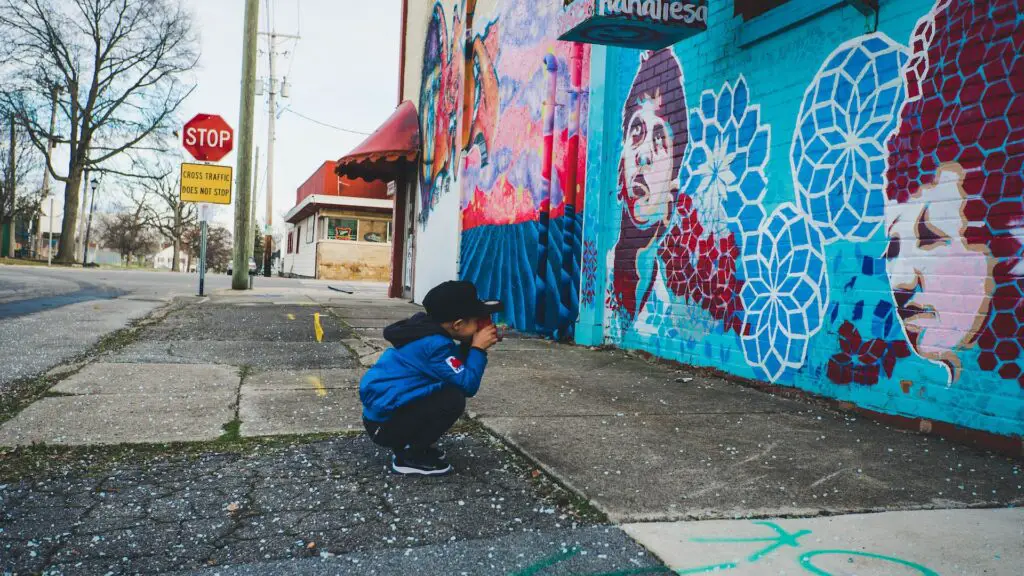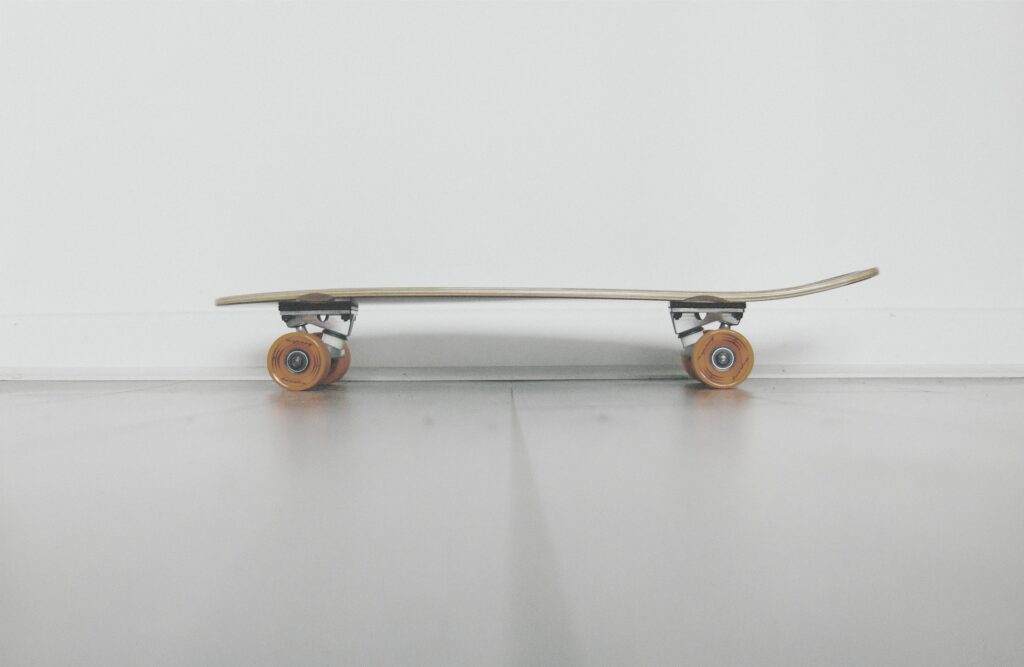
Skateboarding is a popular and challenging sport that requires skill, balance, and determination.
But the question arises, can young children, specifically how can 3 year olds, learn to skateboard? In this article, we will explore the potential of young children to pick up skateboarding and what factors influence their ability to do so
Developmental stages of a 3-year-old child and its impact on learning new skills.
At the age of three, children are in a stage of rapid physical and cognitive development. They are beginning to develop coordination and balance.
Fine motor skills, which are important for activities like skateboarding. However, they are still in a stage where they may have trouble with spatial awareness.
And have limited attention spans, making it difficult for them to learn and retain new skills quickly.
Additionally, their emotional and social development is also a factor that can impact their ability to learn new skills, such as feeling overwhelmed, frustrated, or scared when attempting a new task.
It’s important for parents and guardians to understand these developmental stages and to provide support and encouragement as children learn new skills, including skateboarding.
Importance of safety measures for young children learning to skateboard.
When it comes to young children learning to skateboard, safety is of the utmost importance.
Children at the age of three are still developing their coordination, balance, and fine motor skills, making them. More susceptible to accidents and injuries.
As such, it is important for parents and guardians to ensure that appropriate safety measures are in place before allowing children to start skateboarding.
This may include wearing protective gear such as helmets, knee and elbow pads, and wrist guards. As well as supervising children while they are skateboarding.
Additionally, it’s important to choose a safe environment for children to skateboard in. Such as a designated skate park or a flat and obstacle-free area.
By prioritizing safety, parents and guardians can help prevent accidents and injuries while also allowing children to enjoy and learn the sport of skateboarding.
The role of parents and guardians in helping children learn to skateboard
Parents and guardians play a crucial role in helping children learn to skateboard. Children at the age of three are still developing their cognitive and motor skills.
May need extra support and encouragement as they begin to learn new activities like skateboarding.
Parents and guardians can help by providing a supportive and encouraging environment.
Setting clear expectations and boundaries, and providing guidance and instruction as needed.
They can also help by choosing appropriate skateboarding equipment. Such as a smaller skateboard that is easier for a child to control. And ensuring that the child has the appropriate protective gear.
Additionally, parents and guardians can help children develop their skateboarding skills by encouraging them to practice and by finding opportunities for them to participate in supervised skateboarding activities.
By being involved and supportive, parents and guardians can help children develop their skills and confidence as they learn to skateboard.
when should I teach your child to skateboard?
The decision of when to teach a child to skateboard is a personal one and depends on several factors. Age is a consideration.
As children need to have developed enough coordination and balance to safely handle a skateboard.
Most children are able to start skateboarding between the ages of 5 to 8. It’s important to take into account the child’s individual developmental milestones and abilities. As well as their interest and enthusiasm for the sport.
Safety should also be a top priority, so it’s important to have the appropriate protective gear and to supervise the child while they are skateboarding.
Additionally, a supportive and encouraging environment can also play a role in a child’s success in learning to skateboard.
Ultimately, the best time to teach a child to skateboard is when they are ready. Both physically and emotionally, and when they express an interest in the sport.

Conclusion:
In conclusion, introducing children to skateboarding can be a fun and exciting experience for both the child and the parent or guardian.
However, it’s important to prioritize safety, consider the child’s developmental milestones and abilities, and provide a supportive and encouraging environment.
Children as young as three years old can start learning to skateboard, but it’s important to keep in mind that their physical and cognitive development may impact their ability to learn and retain new skills quickly.
By taking the appropriate safety measures, providing guidance and instruction, and encouraging the child to practice, parents and guardians can help their child develop the skills and confidence needed to enjoy the sport of skateboarding.
Frequently Asked Questions(FAQ)
At what age can start skateboarding?
Children can start skateboarding at around 5 to 6 years old, although it ultimately depends on their physical coordination and comfort level with the activity. It’s important to ensure they have appropriate safety gear and supervision when they begin.
How do you skateboard for toddlers?
Skateboarding for toddlers is not recommended due to safety concerns. Skateboarding requires a level of balance and coordination that most toddlers have not yet developed. It’s safer to introduce them to skateboarding-related activities, such as using a skateboard as a ride-on toy while being closely supervised until they are older and better equipped to handle a skateboard.
Can you start skateboarding at 35?
Yes, you can start skateboarding at 35 or any age. Skateboarding is an inclusive sport, and people of all ages can enjoy it. Just be sure to start gradually, wear protective gear, and prioritize safety as you learn.
How to make a skateboard for kids?
Making a skateboard for kids involves several steps:
-
Gather Materials: You’ll need a skateboard deck, grip tape, trucks, wheels, bearings, and screws. These are available at skate shops or online.
-
Assemble Trucks: Attach the trucks to the deck using screws and a skate tool. Make sure they are evenly spaced and tightened securely.
-
Add Wheels: Insert the bearings into the wheels, then attach the wheels to the trucks. Ensure they spin freely and evenly.
-
Apply Grip Tape: Peel the backing off the grip tape and carefully apply it to the deck. Smooth out any bubbles or wrinkles, then trim the excess grip tape around the edges.
-
Test and Adjust: Check the skateboard’s stability and make any necessary adjustments to the trucks for the desired level of tightness.
-
Safety Gear: Always ensure the child wears appropriate safety gear, including a helmet, knee pads, elbow pads, and wrist guards, when skateboarding.
-
Supervision: Supervise the child closely as they learn to ride their skateboard, especially if they are beginners.
Remember, safety is the top priority when making and using a skateboard for kids.
How should a beginner start skateboarding?
A beginner should start skateboarding by:
-
Choosing the Right Skateboard: Pick a skateboard that suits your size and style, typically a wider and more stable deck for beginners.
-
Safety First: Always wear protective gear, including a helmet, knee pads, elbow pads, and wrist guards.
-
Learn Basic Stance: Practice your stance, either regular (left foot forward) or goofy (right foot forward), and find your comfortable footing.
-
Master Balancing: Spend time getting comfortable just standing on the skateboard and finding your balance.
-
Pushing Off: Learn how to push off with one foot while keeping the other foot on the skateboard.
-
Braking and Footwork: Practice foot braking and controlling your speed.
-
Turning: Begin with basic turns by shifting your weight on the board. As you progress, learn to kick-turn.
-
Practice, Practice, Practice: Consistent practice is key to improvement. Start with flat surfaces and gradually move to more challenging terrain as you gain confidence.
-
Take it Slow: Don’t rush into tricks or advanced maneuvers. Build a strong foundation of skills first.
-
Learn from Others: Watch instructional videos, skate with friends, or consider taking lessons from experienced skateboarders.
Remember, skateboarding takes time and patience to master. Be safe, and have fun while you progress at your own pace.
